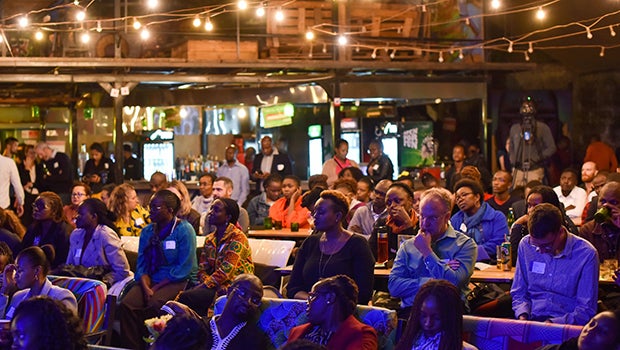The Aspen Challenge — launched by the Aspen Institute and the Bezos Family Foundation — provides a platform, inspiration, and tools for young people to design solutions to some of the most critical issues humanity faces. The program engages leading global visionaries, artists, and entrepreneurs to issue real world challenges to teams of students.
Twenty teams from Chicago Public Schools will compete with each other and present their solutions for a chance to attend the Aspen Ideas Festival. Here, Peace First Fellow Jasmine Babers explains why women of color face even tougher barriers in the workplace than their white female peers, and how the Aspen Challenge can help give voice to young women seeking to be heard.
We all know the term “glass ceiling” — it’s the invisible barrier hindering the advancement of women in their professional lives. However, there’s a new term out there that may complicate the way we look at feminism: the “concrete ceiling.” Similar to the glass ceiling, the concrete ceiling is a barrier for success. The difference between the two terms is that the concrete ceiling is a term specifically made for women of color.
Why the need for a different term? A concrete wall reflects the barriers that women of color face more accurately. Let’s start by looking at the difference between the materials. While glass is tough, you can shatter it. You can see through it to the level above — and you know that there is something to aspire to. If you can see it, you can achieve it.
Concrete, on the other hand, is practically impossible to break through by yourself. It’s definitely impossible to see through. There is no visible destination, just what seems like a dead end. This is what women of color face in the workforce: an often impenetrable barrier, with no vision of how to get to the next level.
This new term had to be created, simply because the experiences of white women and women of color are extremely different, but too often ignored.
The problem is not ambition. Women of color have made impressive strides towards higher levels of education and success. Today, black women surpass any other group in both race and gender in college enrollment. It’s clear women of color want to work and want to succeed, but they are more likely than any group in America to work for poverty-level wages. This is due to multiple factors, including unconscious bias, the confidence gap, and lack of opportunity, all acting as part of the concrete ceiling.
The good news is that even concrete can be cracked, but it won’t be easy. Our biggest sledgehammer is making sure that women of color have a voice. When I started Love Girls Magazine (LGM), I didn’t realize the power of simply giving girls the opportunity to share their opinions, worries, and stories. By giving young women this platform, they could finally be heard. And when we listen to them, we give them the power they need to start affecting change.
Here’s what we know: empowerment works. When people are valued at an early age, they’re more likely to carry that self-worth throughout their lives. We need to make sure we are making room for women of color. And we ourselves need to be role models for the next generation. More than 50 percent of volunteers and leaders on the LGM team are African-American; working as examples to look up to works.
Young women will join the conversation when we invite them. That’s why programs like the Aspen Challenge and Peace First are so necessary; they give voice to youth, and just as important, the confidence to speak up and be heard. When a young person participates in something like the Aspen Challenge they are implicitly told their actions matter, their experiences matter, their voices matter, and they have real value to their community.
Jasmine McCaskill, a high school student from Desoto County, Mississippi, recently submitted the following comments for the spring issue of LGM:
“Girl power is not only a movement of unity; it is a way of life that embraces every girl from every culture, spreading infinite love like confetti. Because girl power originates from love — a love that sparks the passion to be great.”
My suggestion is that we break through barriers together: the glass ceiling, and any other ceiling that gets in our way.

